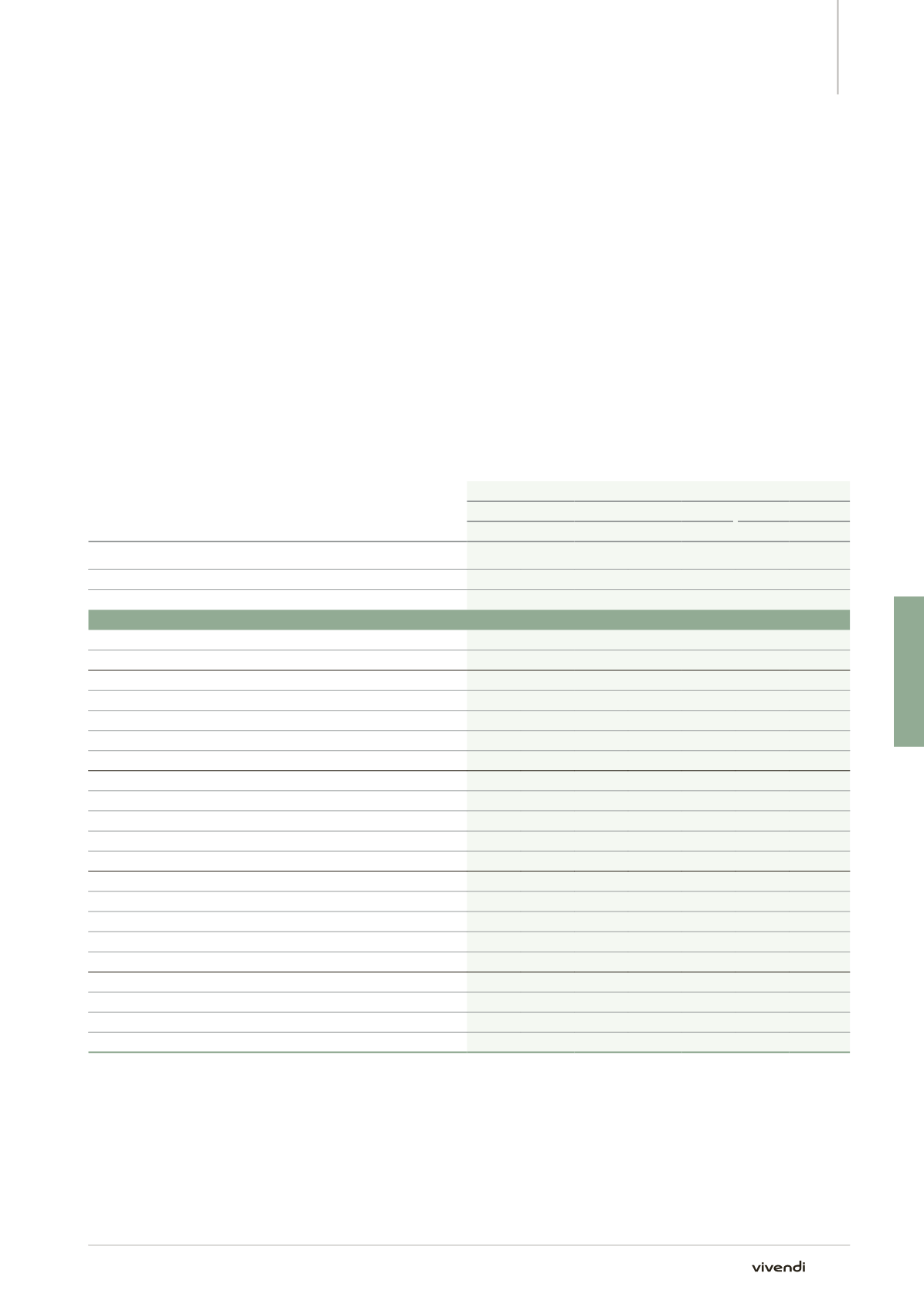

4
Financial Report | Statutory Auditors’ Report on the Consolidated Financial Statements |
Consolidated
Financial Statements
| Statutory Auditors’ Report on the Financial Statements | Statutory Financial Statements
Note 22. Financial instruments and management of financial risks
22.2.4.
Foreign currency risk management
Excluding GVT, the group’s foreign currency risk management is
centralized by Vivendi SA’s Financing and Treasury Department and
primarily seeks to hedge budget exposures (at an 80% level) resulting
from monetary flows generated by activities performed in currencies
other than the euro as well as from external firm commitments (at a
100% level), primarily relating to the acquisition of editorial content
(including sports, audiovisual and film rights) and certain capital
expenditures (e.g., set-top boxes), realized in currencies other than the
euro. Most of the hedging instruments are foreign currency swaps or
forward contracts that have a maturity of less than one year. Considering
the foreign currency hedging instruments established, an unfavorable and
uniform euro change of 1% against all foreign currencies in position as of
December 31, 2014, would have a non-significant cumulative impact on
net earnings (below €1 million). In addition, the group may hedge foreign
currency exposure resulting from foreign-currency denominated financial
assets and liabilities. Moreover, due to their non-significant nature, net
exposures related to subsidiaries’ net working capital (internal flows of
royalties as well as external purchases) are generally not hedged. The
relevant risks are settled at the end of each month by translating the
amounts into the functional currency of the relevant operating entities.
The principal currencies hedged by the group are US dollars (USD) and
British pounds (GBP). In 2014 and 2013, to hedge against a possible
depreciation of its net investment in certain subsidiaries in the United
Kingdom due to an unfavorable change in GBP, Vivendi set up a hedge
using forward contracts for a notional amount of £832 million, or
€1,046 million. From an accounting perspective, these hedge instruments
were considered as net investment hedges.
The following tables present the foreign currency risk management instruments used by the group; the positive amounts relate to currencies to be
received, the negative amounts relate to currencies to be delivered:
(in millions of euros)
December 31, 2014
Notional amounts
Fair value
Total
USD PLN GBP Other Assets Liabilities
Sales against the euro
(1,233)
(52)
(56)
(1,062)
(63)
2
(19)
Purchases against the euro
1,908
717
51 1,020
120
40
(2)
Other
-
59
-
1
(60)
1
-
675
724
(5)
(41)
(3)
43
(21)
Breakdown by accounting category of foreign currency hedging instruments
Cash fow hedge
Sales against the euro
(67)
(9)
(45)
(2)
(11)
2
(1)
Purchases against the euro
33
33
-
-
-
2
-
Other
-
-
-
-
-
-
-
(34)
24
(45)
(2)
(11)
4
(1)
Fair value hedge
Sales against the euro
(68)
(43)
(11)
(14)
-
-
(1)
Purchases against the euro
275
275
-
-
-
14
-
Other
-
3
-
1
(4)
-
-
207
235
(11)
(13)
(4)
14
(1)
Net investment hedge
Sales against the euro
(1,046)
-
-
(a)
(1,046)
-
-
(17)
Purchases against the euro
-
-
-
-
-
-
-
Other
-
-
-
-
-
-
-
(1,046)
-
- (1,046)
-
-
(17)
Economic hedging
(b)
Sales against the euro
(52)
-
-
-
(52)
-
-
Purchases against the euro
1,600
409
51 1,020
120
24
(2)
Other
-
56
-
-
(56)
1
-
1,548
465
51 1,020
12
25
(2)
271
Annual Report 2014



















